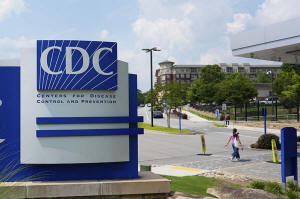CDC dramatically scales back program that tracks food poisoning
infections
[August 28, 2025]
By JONEL ALECCIA
Federal health officials have dramatically scaled back a program that
has tracked food poisoning infections in the U.S. for three decades.
The Foodborne Diseases Active Surveillance Network, known as FoodNet,
has cut required monitoring to just two pathogens that cause infections,
according to the U.S. Centers for Disease Control and Prevention. That's
down from eight.
Under the change, which began in July, health departments in 10 states
that participate in the joint state and federal program will be required
to monitor only foodborne infections caused by salmonella and Shiga
toxin-producing E. coli bacteria. Those are among the top contributors
to foodborne illnesses, hospitalizations and deaths in the U.S., the CDC
said.
Previously, the FoodNet system required surveillance of infections
confirmed to be caused by six other germs as well: campylobacter,
cyclospora, listeria, shigella, vibrio and Yersinia. That is now
optional.
Narrowing the reporting requirements “will allow FoodNet staff to
prioritize core activities,” CDC spokesman Paul Prince said in a
statement. The move lets the agency “steward resources effectively,” he
added. It's not clear whether the action is connected to recent funding
cuts enacted by the Trump Administration.

But food safety officials, including those in states that participate in
the program, said the change could slow detection of foodborne illness
outbreaks and obscure the full picture of food-related infections.
“Long term, it will affect our ability to use surveillance data to
better understand risks in the food supply,” said Carlota Medus, who
supervises the Minnesota Department of Health's foodborne diseases unit.
Foodborne infections caused by specific germs are required to be
reported to the CDC or to state health departments. But relying on
passive reports of infections rather than actively seeking out
laboratory data, hospital details and other information can mean that
some cases are missed, Medus said.
[to top of second column]
|

The campus of Centers for Disease Control and Prevention is seen in
Atlanta, on Wednesday, June 25, 2025. (AP Photo/Mike Stewart, File)
 “FoodNet doesn’t just count cases.
The FoodNet sites collect robust data that contribute to the
understanding of certain infections,” she said.
In addition to Minnesota, FoodNet sites include health departments
in Colorado, Connecticut, Georgia, Maryland, New Mexico, Oregon,
Tennessee, certain counties in California and New York.
The FoodNet reduction was first reported by NBC News.
FoodNet was created in 1995 as a partnership between the CDC, the
U.S. Agriculture Department, the U.S. Food and Drug Administration
and several states. It has tracked infections in a surveillance
system that captures about 16% of the U.S. population.
It allowed the U.S. to estimate the number of cases of illness per
100,000 population caused by certain foodborne germs, said Frank
Yiannas, a food safety expert and former FDA official.
“We won’t know as accurately as possible if we’re getting better or
worse in respect to certain pathogens,” Yiannas said.
All contents © copyright 2025 Associated Press. All rights reserved
 |